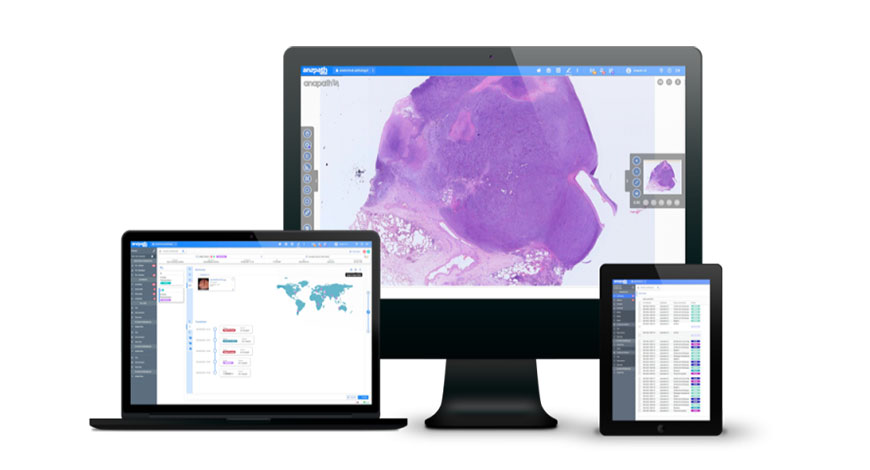The La Línea de la Concepción Hospital incorporates the AnaPath software to obtain faster, more accurate diagnoses in pathological anatomy
- Interoperability, automation, digitisation of paper requests and documents and scientific and statistical use of data are just some of the functions of this tool
- “We are investing decisively in innovation, to the benefit of quality and patient safety”, stated the Campo de Gibraltar East health Management Area Director, Carmen Rodríguez

Madrid, 5 September 2023
The La Línea de la Concepción Hospital (Cadiz) has incorporated AnaPath, a disruptive and customisable software program, making it the eighth centre in Andalusia to install the tool, after multicentre installation in hospitals in the provinces of Granada and Cordoba. Nationally, other autonomous communities such as Madrid and Barcelona have also invested in digital transformation, adding AnaPath to their daily management systems.
This comprehensive management software for pathological anatomy labs provides times savings for professionals and facilitates interoperability between centres, while also reducing maintenance costs. One of the most striking aspects of this third-generation tool, developed technologically for integration into current digital and computational pathology systems (using AI algorithms), is that it offers the support pathologists need to provide faster, more accurate diagnoses.
In this sense, the advantages of its installation to the hospital include traceability and greater control of all lab processes and samples. It also includes functionalities such as automation, digitisation of paper requests and documents, photos and audio files, scientific and statistical use of the data, notifications, alerts and managing deliveries. Other aspects that are also highly valued by AnaPath users are interoperability and the ability to share information between centres and to exchange samples and images with digital pathology.
“We are investing decisively in innovation, to the benefit of quality and patient safety”, stated Carmen Rodríguez, the Director of the Campo de Gibraltar East Health Management Area.
Indeed, integrating computational and digital pathology is considered the future of pathological anatomy, using automated diagnostic algorithms to provide diagnoses quickly and effectively, thereby reducing errors and response times. Integrating this support tool in AnaPath for pathologists (who provide the final diagnoses in cases) is essential to management and efficiency in pathological anatomy in the future, placing AnaPath at the cutting-edge of digitisation in pathology around the world.
As well as helping professionals, the software also benefits patients, for example in the quality of the results, response times (as diagnoses are faster and easier to produce), access to the patient’s medical history and controlling the traceability of samples.
Andrés Ballesteros, the Vitro Pathology CEO, stressed that in the future, the implementation of digital and computational pathology “could further facilitate the sharing of information and images with other pathologists, making consultations quicker and reducing specialists’ diagnostic times, so treatments can be applied earlier and with greater precision, all leading to benefits for the patient, which is always Vitro’s goal”.

